Jet thrust or how an ion jet engine works

It is no secret that all jet engines operate at the expense of the law of conservation of momentum. It follows from it that jet thrust is the product of mass flow rate at the speed of exit of the working fluid from the nozzle .
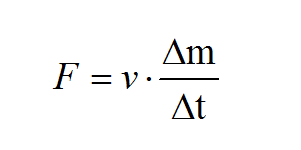
This speed is called the specific impulse of a jet engine. Let us, for example, find jet propulsion when firing from a Kalashnikov assault rifle, which is the main component of recoil. Let the mass of the bullet be 0.016 kg , the initial velocity of the bullet 700 m / s , and the rate of fire of 10 shots / sec . Then the recoil is F = 700 ∙ 0.016 10 = 112 N (or 11 kgf) . Great return, but here is the technical rate of fire 600 shots / min. In reality, shooting is fired by bursts or single and amounts to ≈50 shots / min.
AK shot 

Let us return to real jet engines, in which instead of bullets there are usually used streams of gas leaving at a hypersonic velocity. Chemical jet engines are the most common, but not the only ones.
In this article, with great preface, I want to talk about ion jet engines (hereinafter IRD). IRDs use charged particles - ions as a working medium. Ions have mass, and if they are accelerated by an electric field, then you can create a jet thrust. This is all in theory, and now more. An RDI has a certain amount of gas, which is ionized (i.e., neutral-charged gas atoms are divided into negative electrons and positive ions) using a gas discharge. Further, the ions are accelerated by the electric field using a special grid system, and the same grid system blocks the movement of electrons. After the positive ions have flown out of the nozzle, they are neutralized by negative electrons (as a result of this, recombination occurs and the gas begins to glow) so that the ions are not attracted back to the engine and thus do not reduce its thrust.

Why xenon?
Usually xenon gas is used as a working medium in IRD, since it has the lowest ionization energy among inert gases.


The specific impulse of ionic jet engines reaches 50 km / s, which is 150 times the speed of sound! Alas, but the thrust of such engines is about 0.2 N. Why is that? After all, the specific impulse is very large. The fact is that the mass of ions is very small and the mass flow rate is small. Why then such engines are needed if they can not move anything? On Earth, they may not be able to, but in space, where there are no resistance forces, they are quite effective. There is such a thing as a full impulse - the product of thrust for time or the product of specific impulse on the mass of fuel , which is quite large in the IRD.
We solve the following problem. Let the liquid-propellant rocket engine has a specific impulse of 5 km / s, and our IRD will have 50 km / s. And give the mass of the working fluid (in the LRE, it is equal to the mass of fuel) for both engines will be 50 kg. Take the mass of the spacecraft is equal to 100 kg.
We will find the final speed of the device using the Tsiolkovsky formula (that is, when the working mass is finished in it).
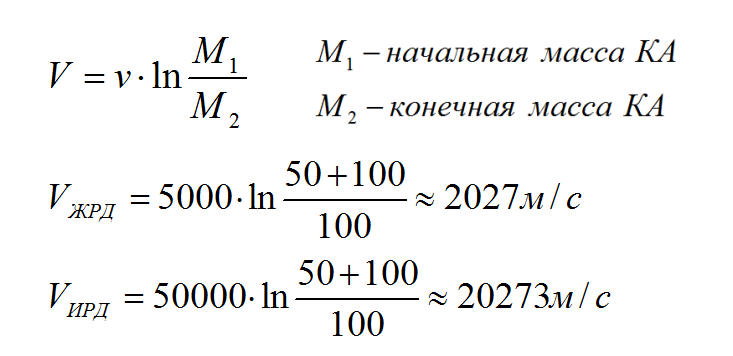
And what happens if the ion and chemical jet engines have the same mass of fuel, then the RDI can accelerate the spacecraft to high speeds than the chemical taxiway. True to the IRD, the spacecraft will accelerate longer to the final speed than the liquid propellant rocket engine. But when traveling to distant planets, a high final (accelerating) speed will compensate for this disadvantage.
Flight pattern to Mars on IRD 

IRD are used in our time. For example, the Deep Space 1 unit became close to the asteroid Braille and the comet Borelli, and transmitted to Earth a significant amount of valuable scientific data and images.
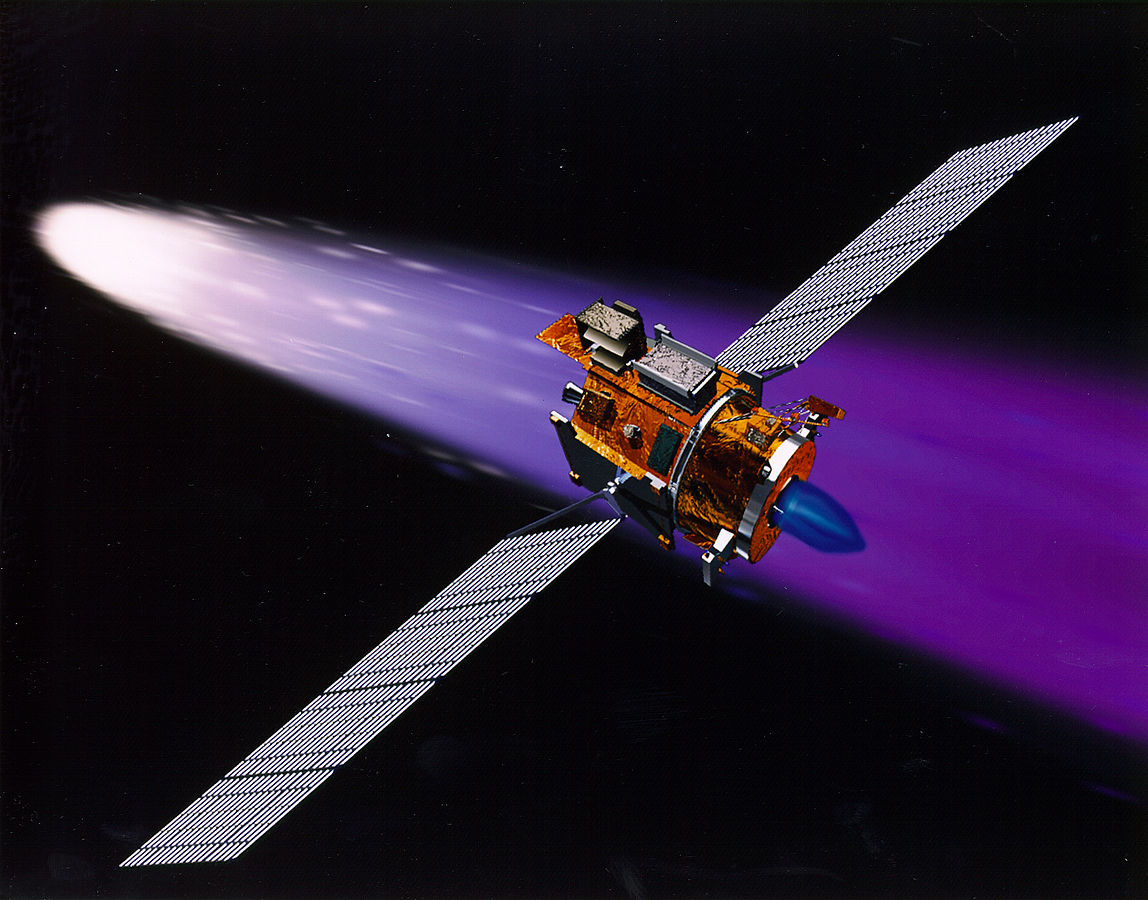
Deep Space 1
Also, the LISA space antenna, which is currently at the design stage, will use the IRD to adjust the orbit.
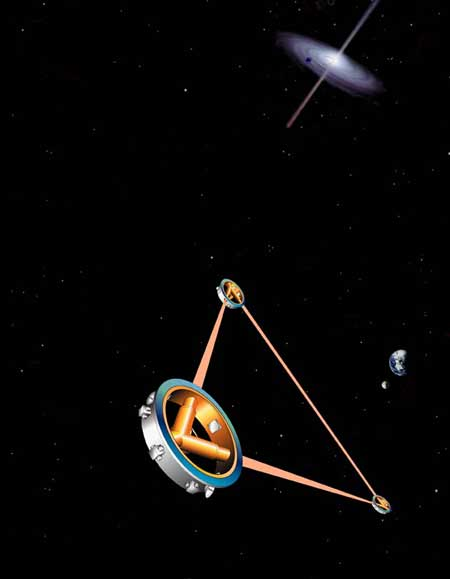
Laser Interferometer Space Antenna
And finally, let's define the thrust of the IRD, knowing the mass of the ion M = 6.5 ∙ 10 ^ -26 kg , accelerating the voltage U = 50 kV , neutralization current I = 0.5 A , elementary charge e = 1.6 10 ^ - 16 Cl .
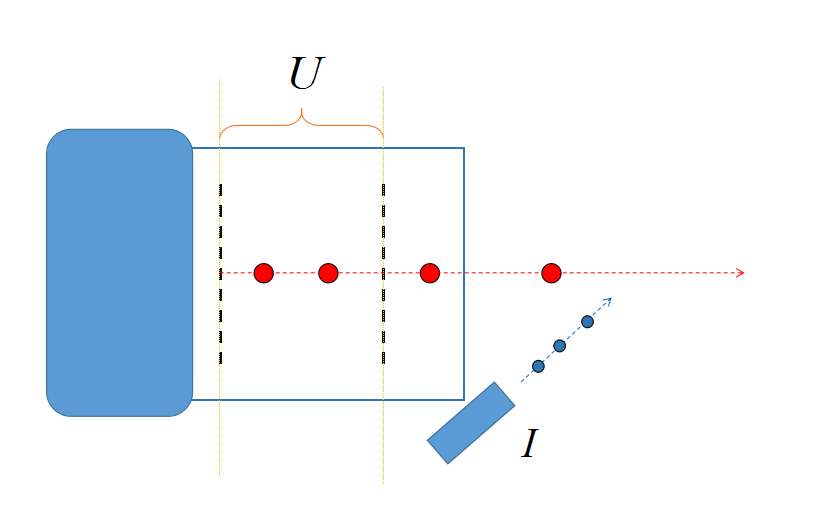
Voltage is charge transfer work, i.e. at the nozzle exit, the ion will have a kinetic energy equal to the product of the voltage and the ion charge. From the kinetic energy express the speed (specific impulse). We find the mass flow rate from the definition of current, the electric current is the charge passing through time. It turns out that mass flow is the product of the mass of the ion and the current divided by the charge of the ion. Multiplying the specific impulse and mass flow, we obtain a thrust equal to 0.1 N.

Summing up, I want to say that there are plasma jet engines that have a similar device, but which have a much larger mass flow rate of the working fluid. Who knows, maybe tomorrow humanity will fly to such engines on Mars and the Moon.

All Articles